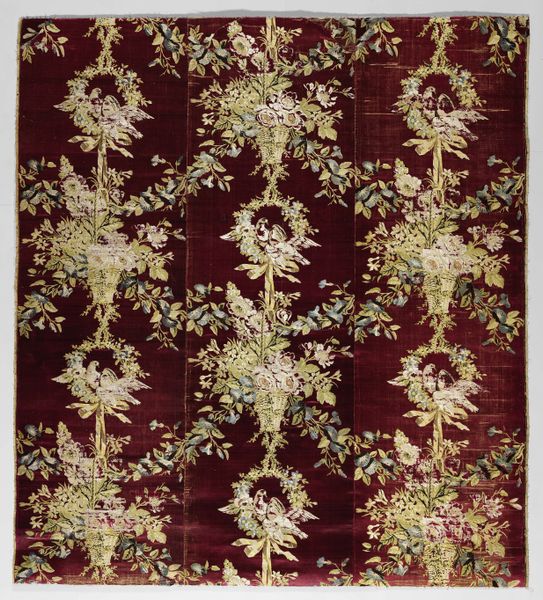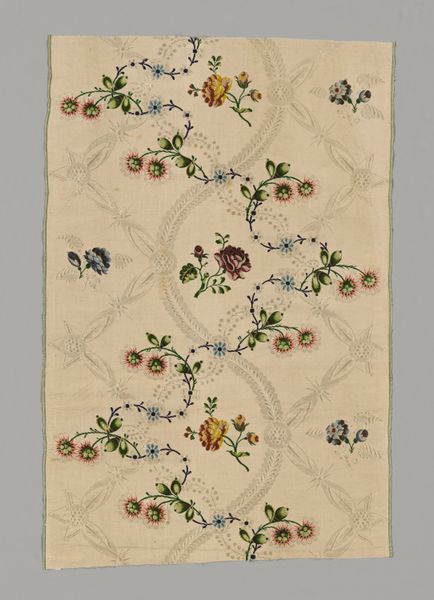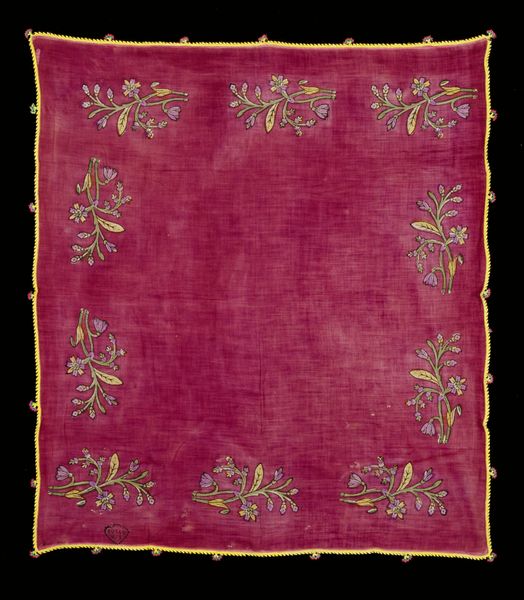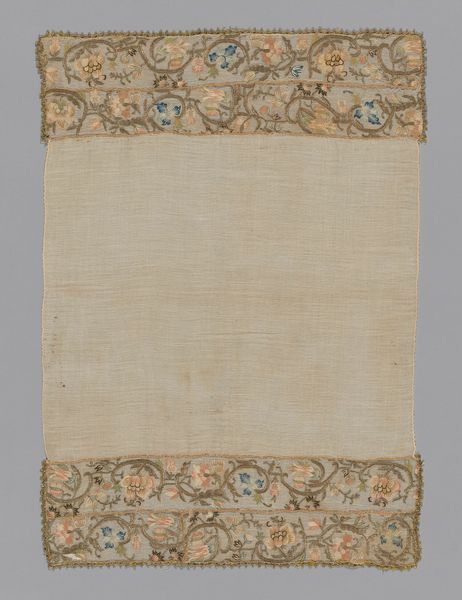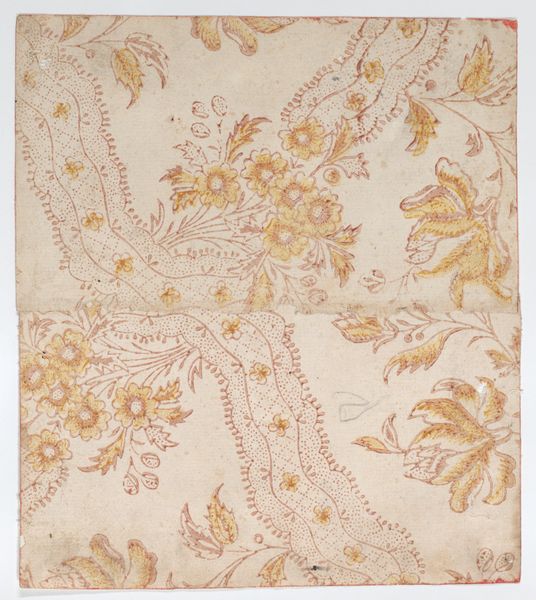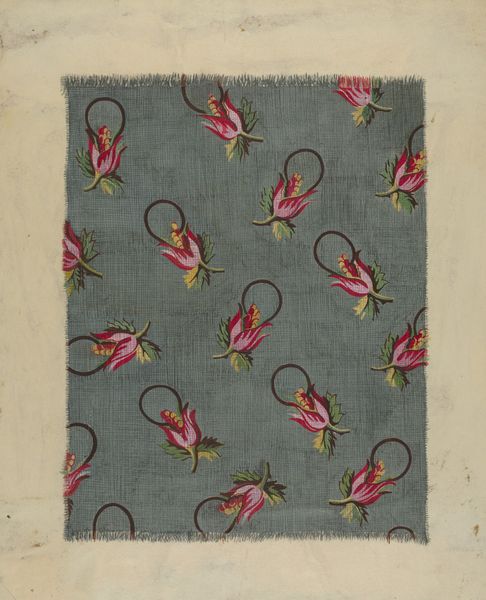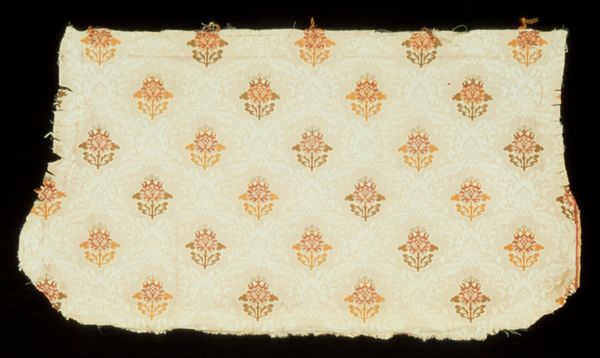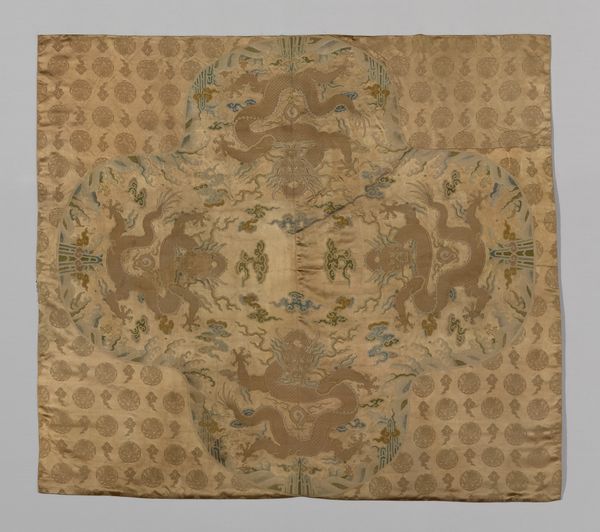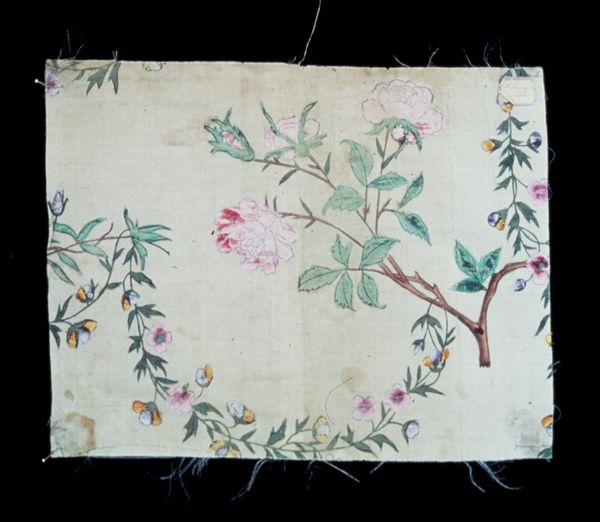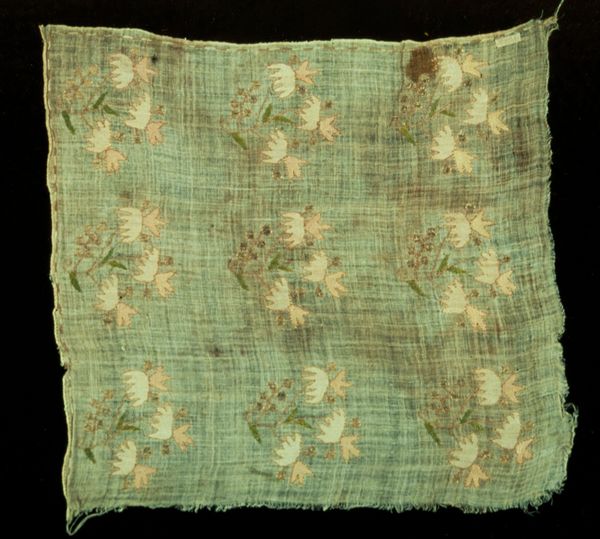
silk, textile
#
pattern heavy
#
natural stone pattern
#
naturalistic pattern
#
silk
#
pattern
#
textile
#
collage layering style
#
geometric pattern
#
ethnic pattern
#
repetition of pattern
#
pattern repetition
#
textile design
#
decorative-art
#
layered pattern
Dimensions: 24 1/4 x 27 1/4 in. (61.6 x 69.22 cm) (without trim)
Copyright: Public Domain
Editor: This is an anonymous silk headscarf with a floral pattern, probably made sometime between 1940 and 1950. It feels very delicate and handmade. I’m struck by how the floral design is arranged; it's like each corner holds a little bouquet. What connections can you make looking at this work? Curator: The strategic placement of these floral groupings evokes a sense of both closure and openness. Imagine the headscarf draped. These 'bouquets' then frame the face, echoing perhaps a desire for protection but also revealing something. Notice the variety within repetition - small colour variations hinting at personal touches. Editor: I see what you mean. The slight variations make it feel more human, less mass-produced. And that edge, the little looped fringe, adds a layer of tactility. Could the choice of Oya flowers hold significance? Curator: Precisely! Textiles in this era were very often imbued with specific meanings tied to cultural memory. Oya flowers, often used in headscarves, signify, amongst other things, swift change and new beginnings, echoing transformations perhaps. Think about what kinds of changes this maker lived through during those decades? Editor: So, it's not just decorative but deeply symbolic. It reminds me how everyday objects can be powerful carriers of cultural narratives and personal experience. I wouldn’t have considered the link to a sense of protection or new beginnings without your insight. Curator: Indeed. The most ordinary image becomes charged when you start thinking about what they might have represented in lived experiences, continuing a visual language across generations. Hopefully now you might see just a little bit more when encountering these recurring motifs and themes again? Editor: Absolutely. Thanks, I learned a lot looking at this piece today.
Comments
No comments
Be the first to comment and join the conversation on the ultimate creative platform.
